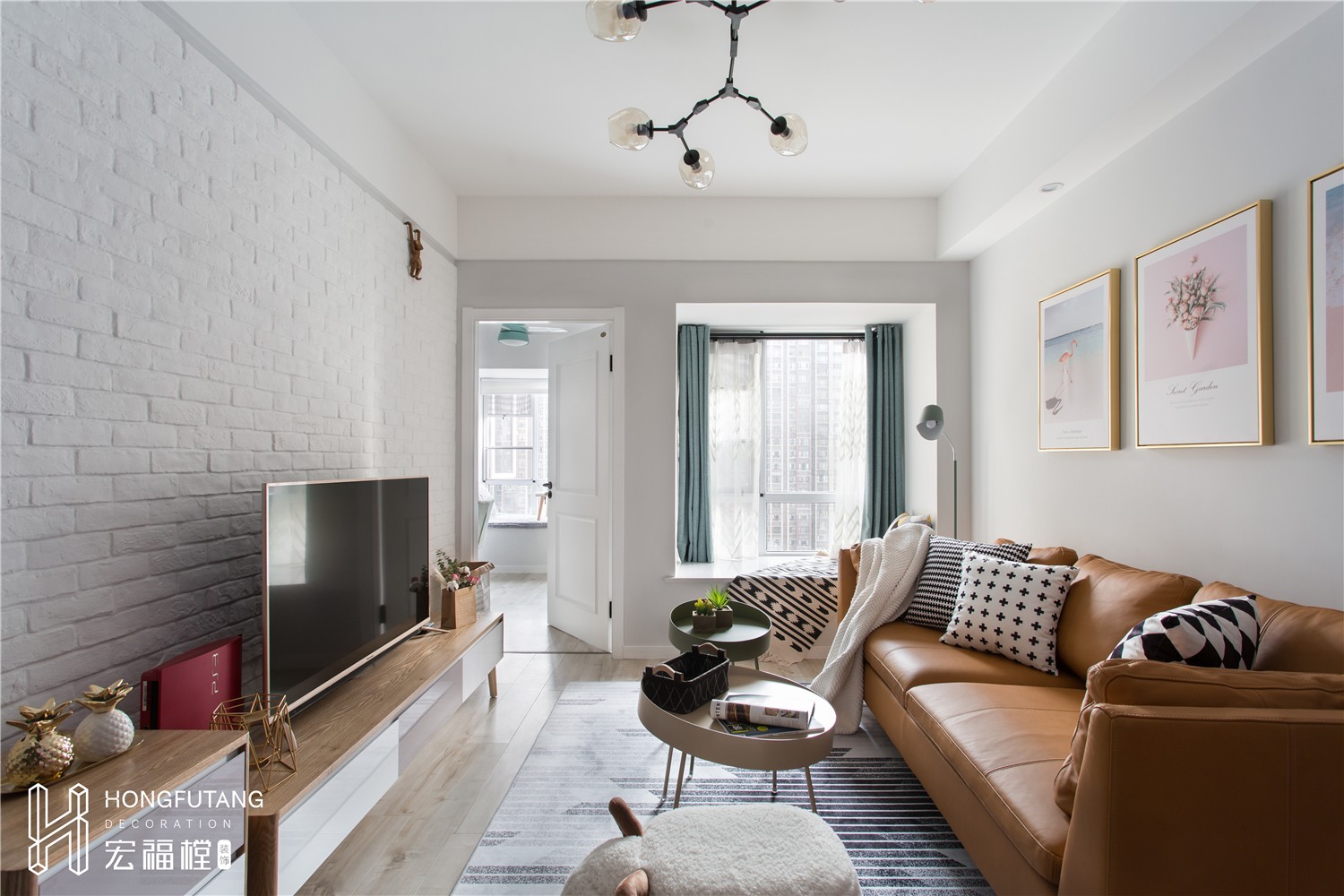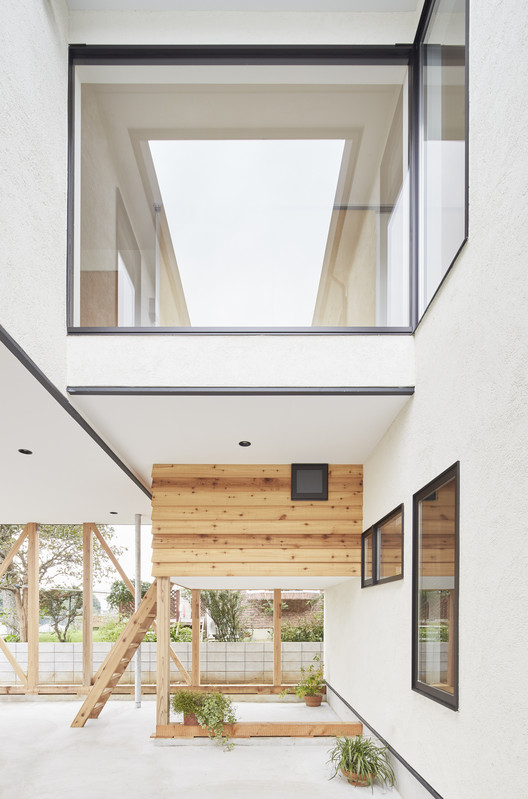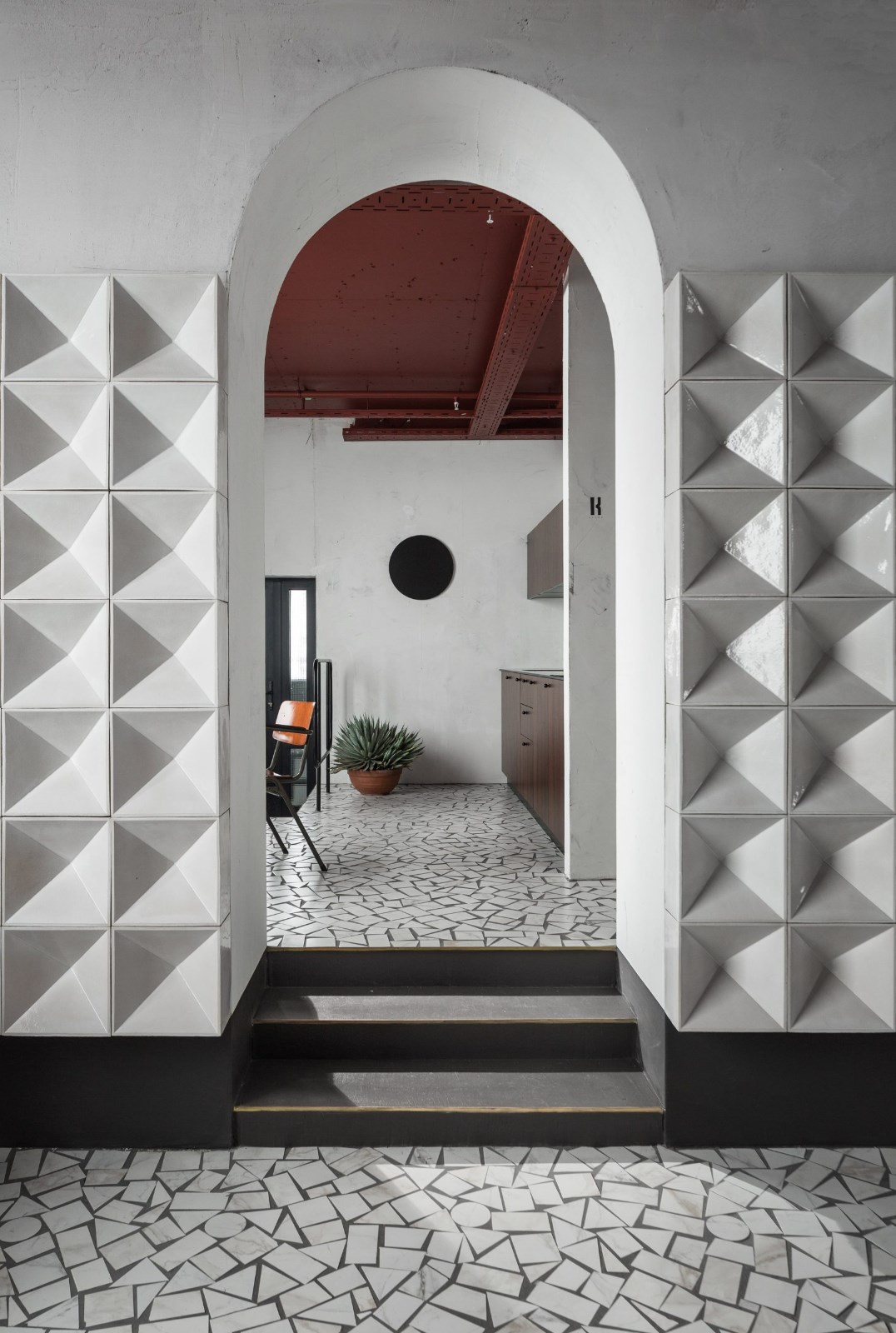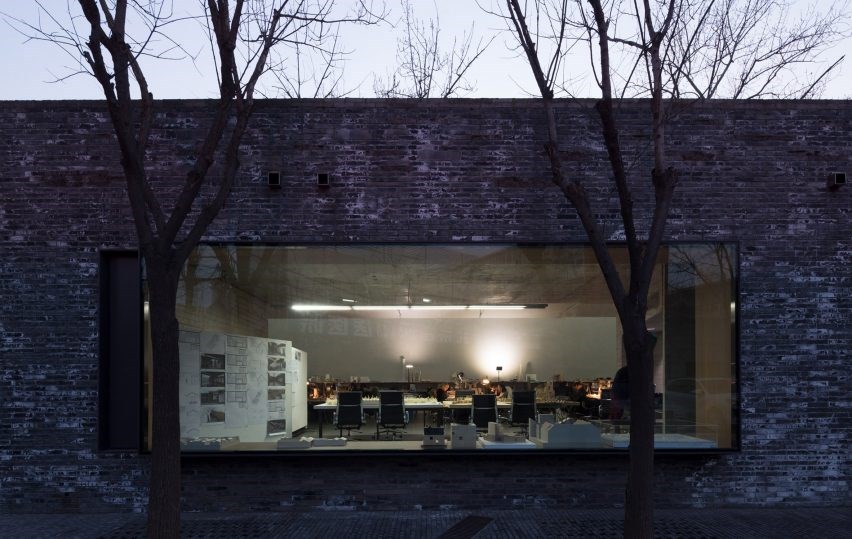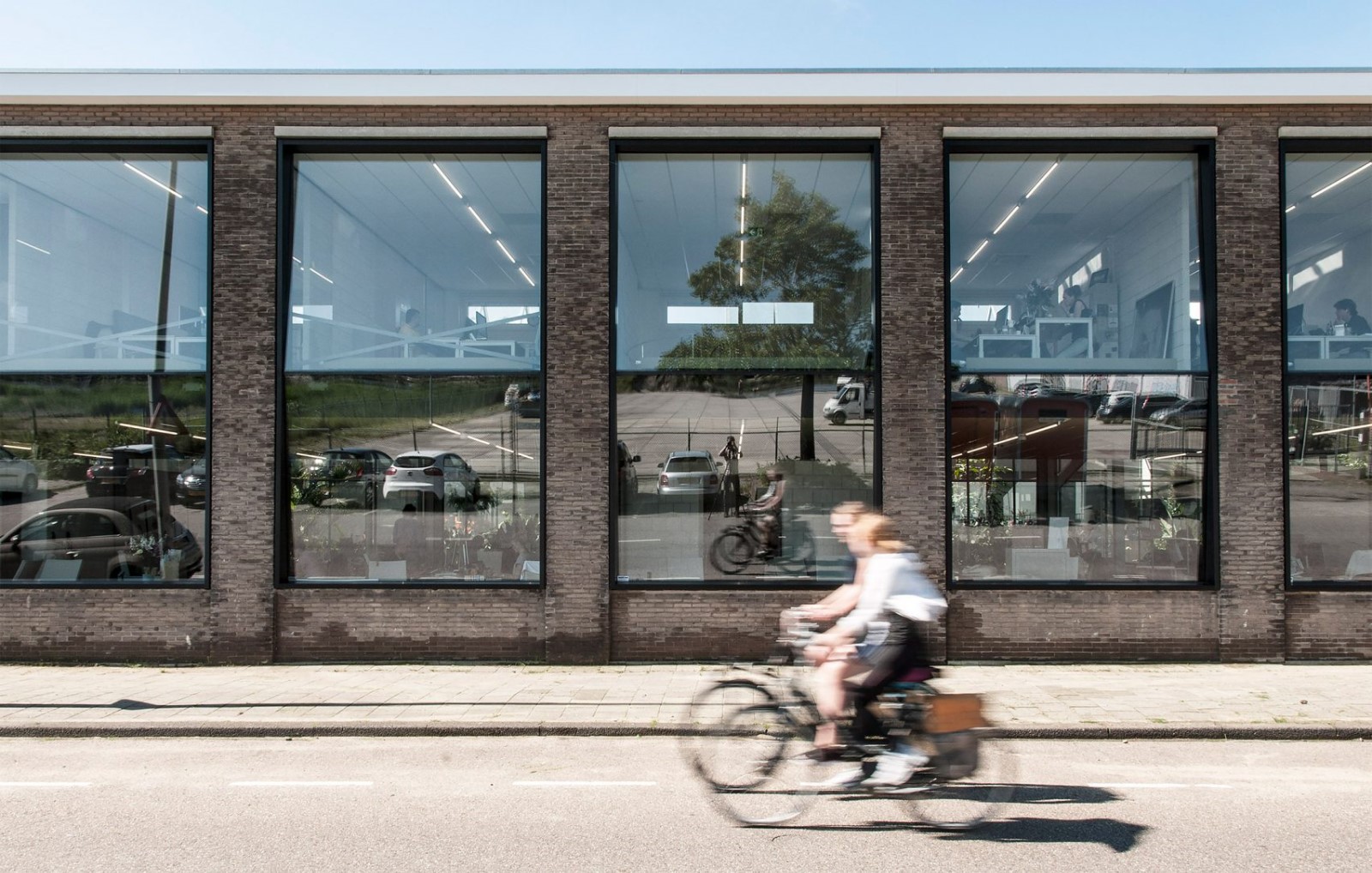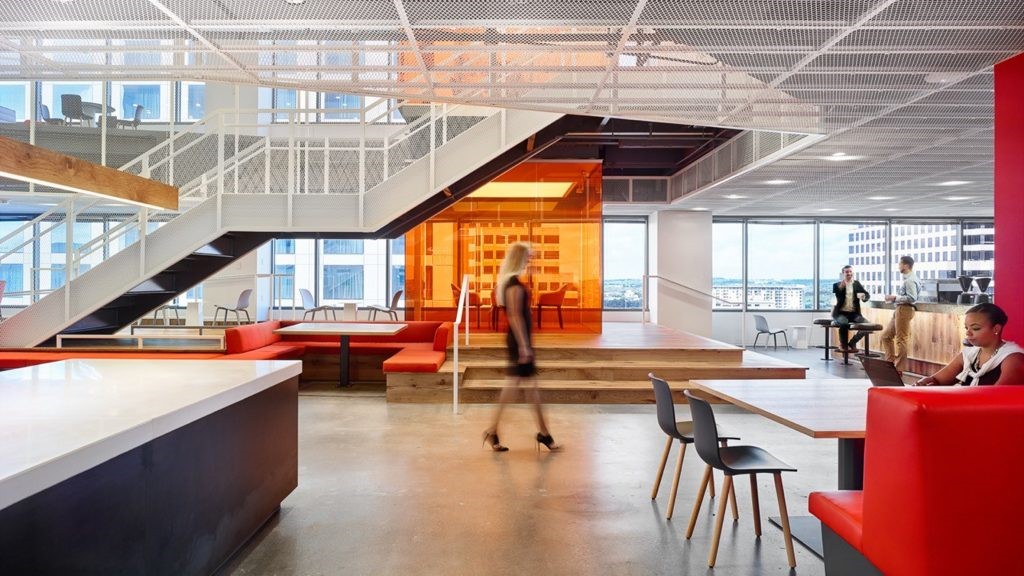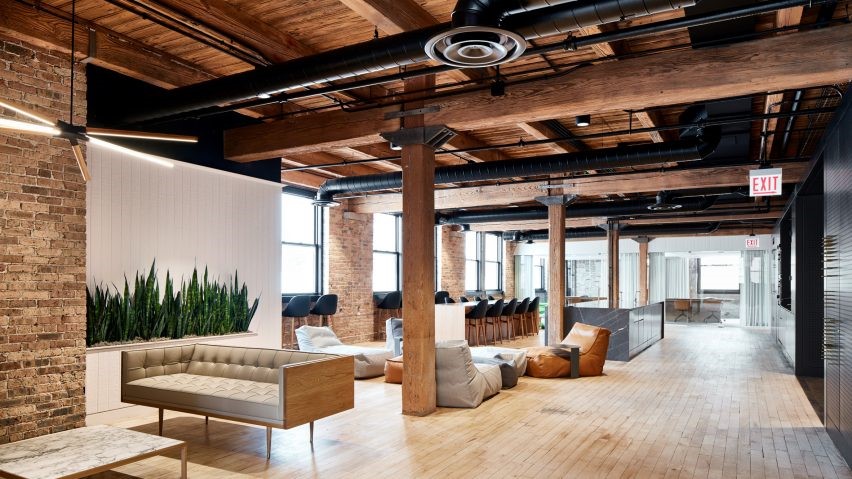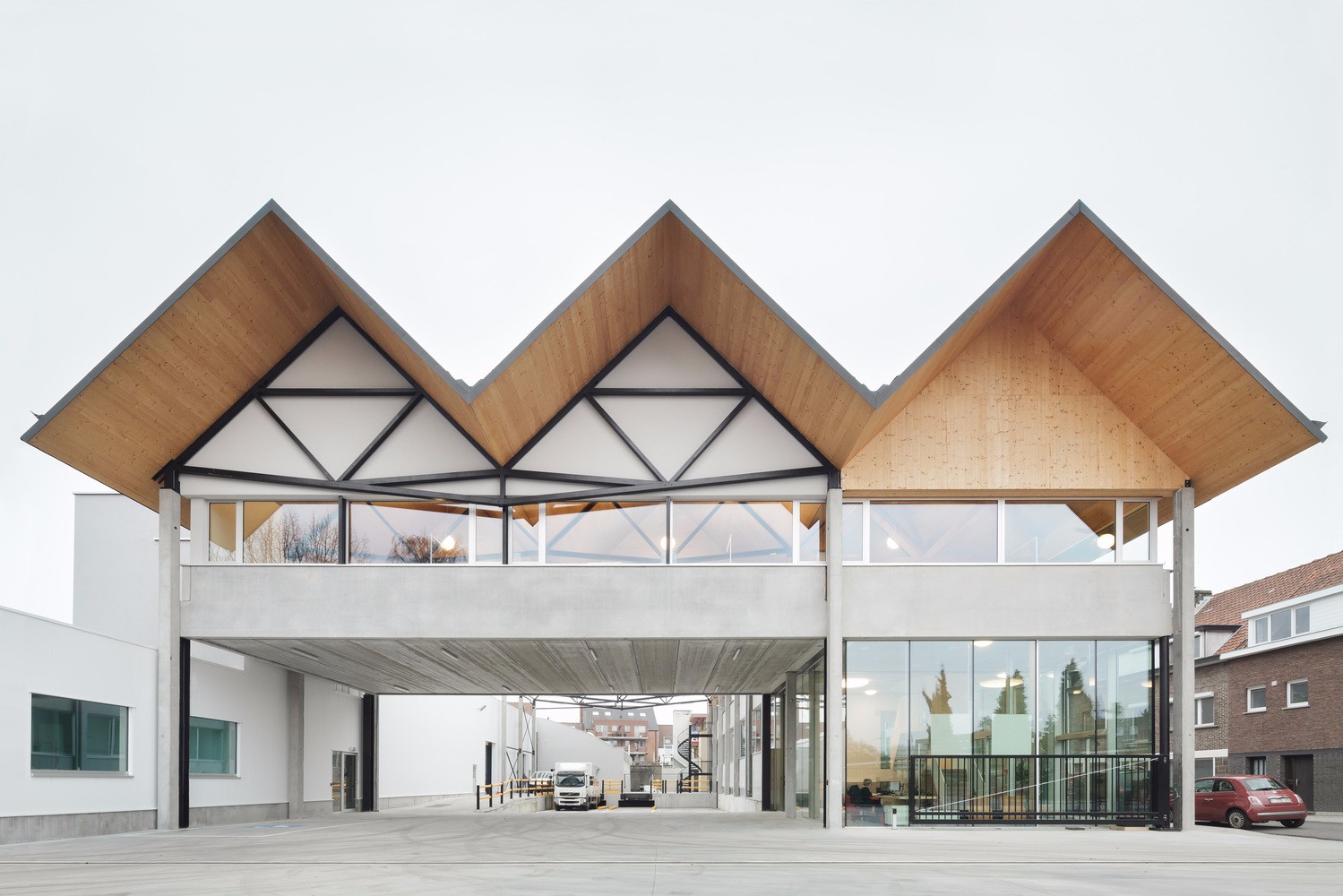Architects Home Studio BetweenSpaces
2016-02-16 20:00
© Kunal Bhatia
(Kunal Bhatia)


架构师提供的文本描述。该项目建于班加罗尔市一片30英尺x40‘向北的地块上,可容纳建筑师们在一楼和一层的房子,以及她在上两层楼的工作室空间,并可单独进入位于东北角的工作室。
Text description provided by the architects. Built on a 30’x40’ North facing plot in the city of Bangalore, the program accommodates the Architects own house on ground and first floor level and her studio space on the upper two levels, with a separate access to the studio in the North East corner.
© Kunal Bhatia
(Kunal Bhatia)


房屋的空间规划是为了最大限度地利用北侧树木林立的街道的不间断景观。由于场地条件紧张及缺乏与邻居物业的私隐,西南角的两间卧室开放为双层餐厅,有一个清晰的楼层窗户供通风,上方的天窗为自然光。
The spatial planning of the house is done in order to take maximum advantage of the uninterrupted view towards the tree lined street on the northern side. Owing to the tight site condition and lack of privacy from the neighbour's property, the two bedrooms in the SW corner open out into a double height dining area with a clear storey window for ventilation and skylight above for natural light.
.jpg)

工作室的两层在视觉上与等待区上方的中央剪裁连接在一起。该布局旨在促进开放的工作室文化,创造空间,鼓励团队成员和主要架构师之间的交互。整个宽度的工作室空间在北侧有10个工作站,并已被解释为一个覆盖的阳台,减薄线之间的内外。北侧20‘x8’滑动铝玻璃窗有一个外部保护层的穿孔板快门板和滑动/折叠机制允许自然光,街道景观和通风进入房屋和工作室空间。
The two levels of the studio have been visually connected with a central cut out over the waiting area. The layout has been designed to facilitate an open studio culture, creating spaces which will encourage interactions between the team members and the principal architects. The entire width of the studio space in the Northern side has 10 work stations and has been interpreted as a covered veranda thinning the line between the inside and outside. The north side 20’x8’ sliding aluminium glazed window with an external protective layer of perforated sheet shutter panels and sliding / folding mechanism allows natural light, view of the street scape and ventilation into the house and the studio space.
© Kunal Bhatia
(Kunal Bhatia)


这个项目是一次有趣的活动,目的是了解建筑物与街道的相互作用。预制混凝土鱼鳍包围了东北角的一个小花园,并定义了入口门厅,使大楼更接近街道。混凝土翅片、钢丝剪断老鼠夹粘结砖墙、穿孔金属板滑动折叠百叶窗等,为建筑物增加了一定的坚固性,同时也给结构带来了轻盈感。单一材料(穿孔板百叶窗)的简单策略有助于实现极小但动态的立面。办公空间和住宅的室内设计是建筑美学的延伸,在每一个可能的时刻,我们都尽可能地保持材料的自然形态。家具单元更像是从里面保存在建筑物外壳前景中的物体。
The project was an interesting exercise to understand how the building interacts with the street. The precast concrete fins enclosing a small garden on the NE corner and defining the entrance foyer brings the building closer to the street. The concrete fins, the wire cut brick walls in rat trap bond and the perforated metal sheet sliding folding shutters add certain ruggedness to the building and at the same time bring lightness into the structure. The simple strategy of a single material (perforated sheet shutters) helped in achieving a very minimal yet dynamic façade. The interior design of the office space and the residence is an extension of the architectural aesthetics of the building and at every possible juncture; we have tried to keep the materials in their natural form as much as possible. The furniture units are more like objects kept in the foreground of the building shell from inside.
© Kunal Bhatia
(Kunal Bhatia)


当地采购线切割和窑烧砖,IPS地板(在工作室水平),黄色氧化物地板,花岗岩石头已被使用。在住宅内的家具中所建的光滑的两色调层压板,与板面混凝土板、梁和未抹灰的砖墙形成了令人愉快的对比。
Locally procured wire cut and kiln burnt bricks, IPS flooring (in studio levels), Yellow oxide flooring, granite stones has been used. The smooth two toned laminate finish built in furniture's in the residence lay in pleasant contrast with the form finish concrete slabs, beams and the unplastered brick walls.
© Kunal Bhatia
(Kunal Bhatia)


在办公室层面,接待区两侧的两个单位分别划定了西南角的会议室和北侧的演播室空间。这两个单元虽然在物理上分开了空间,但在视觉上是多孔的,并兼作仓库和书柜。用木板在铺层的基础上用松木将储藏室和印刷区包裹起来。楼梯下面通往上层的空间已被用作材料库和服务器架。会议室有一个很深的单元,里面有扁平的抽屉,可以存放大的图纸和文具。材料的纹理总是相互矛盾的,但往往表现出一定的视觉衔接感。树根木柱突出了相对平淡和较轻纹理的手指接合橡胶木板。在两层相同或不同类型的材料之间引入了4mm的阴影缝隙,在表面上增加了一个特征,为露台空间打开的上层空间留下了未来的扩展空间。
In the office level, the two units on either side of the reception area demarcate the conference room in the SW corner and the studio space in the northern side. Both these units though physically separate the spaces, are visually porous and double as storages and book shelves.The panelling to encase the pantry and printing area is done in pine wood over ply base. The space under the stairs going to the upper level has been utilized as the material library and server rack. The conference room has a deep unit with flat file drawers to store large drawing sheets and stationeries. The textures of the materials are always contradicting, yet tend to exhibit certain sense of visual cohesion. The sal wood posts accentuate the relatively bland and light grained finger jointed rubber wood planks. 4mm shadow gaps has been introduced between two layers of materials of same or different kind adding a character to the surfaces.The upper floor which opens out to a terrace space has been left for future expansion.
© Kunal Bhatia
(Kunal Bhatia)
.jpg)

与任何设计方法都不一样的是,该项目表现出强烈的欲望,希望摆脱立面建筑的教条,响应我们的草根原则,保持材料调色板与当代底色的简洁、迷人和融合。我们试图从街道上得到一片借来的风景,在紧张的城市条件下为我们自己获得一片天空。
Atypical to any design approach, the project displays a strong sense of desire to get away from the dogma of façade architecture by responding to our grass root principles of keeping it simple, engaging and blending material palette with contemporary undertone. It is our attempt to get a slice of that borrowed landscape from the street and a slice of sky for ourselves in the tight urban condition.
.jpg)





.jpg)























.jpg)

.jpg)

.jpg)

.jpg)

.jpg)

.jpg)

.jpg)

.jpg)

.jpg)

























Architects BetweenSpaces
Location Bengaluru, India
Category Houses
Design Team Divya Ethirajan, Pramod Jaiswal, Reema Dhiman, Anagha, Kevin George
Area 2600.0 ft2
Project Year 2015
Photographs Kunal Bhatia
















